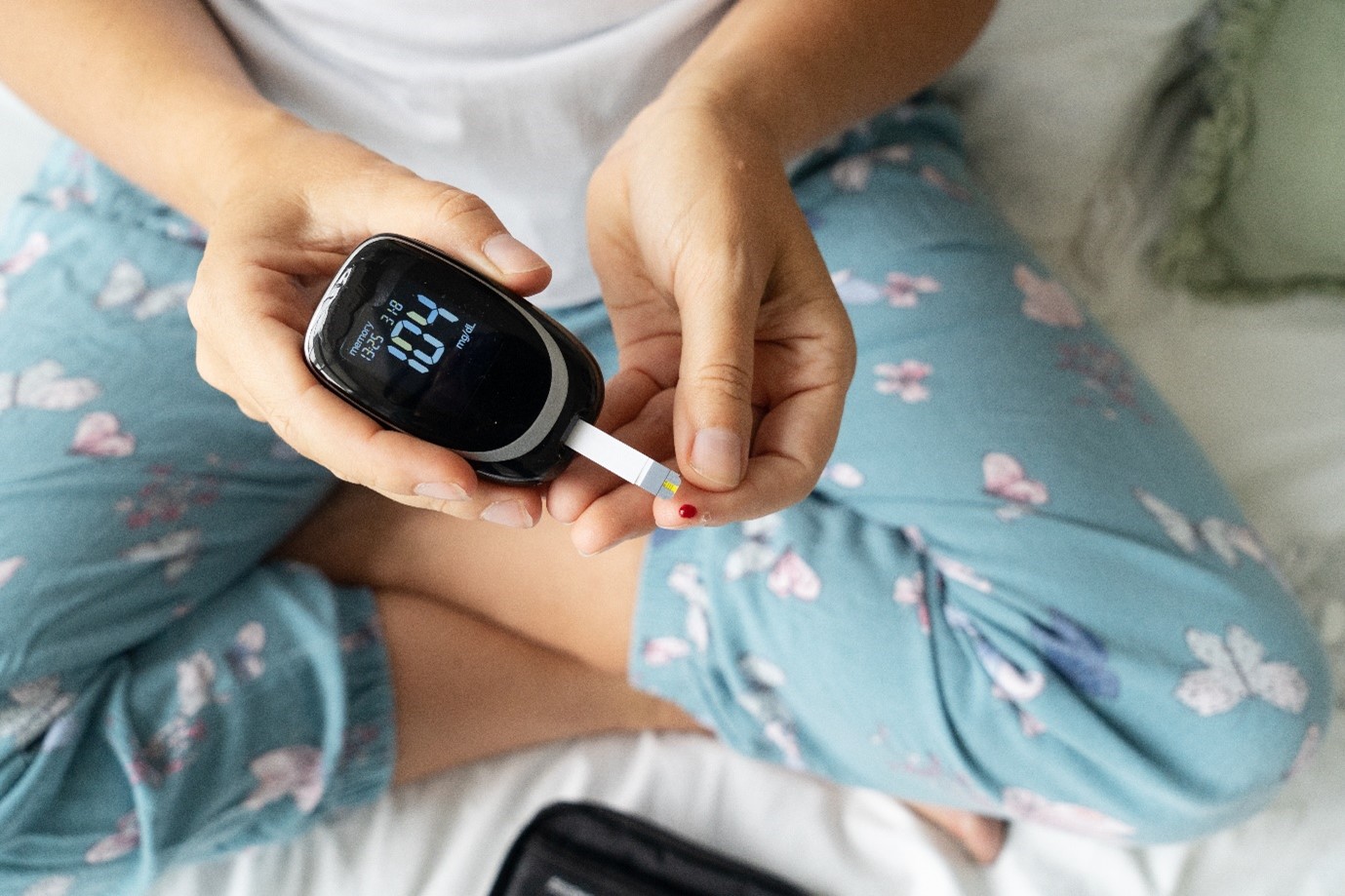What is a Glucose Tolerance Test (GTT)?
A Glucose Tolerance Test (GTT) is a diagnostic procedure that evaluates how your body processes and regulates glucose, a vital energy source derived primarily from carbohydrates in your diet.
The test helps identify conditions like diabetes (prediabetes, Type 2 diabetes, or gestational diabetes) and other glucose-related metabolic disorders, including insulin resistance, reactive hypoglycemia, acromegaly, and rare carbohydrate metabolism abnormalities.
The most common type of GTT is the Oral Glucose Tolerance Test (OGTT), which involves drinking a glucose-rich liquid followed by periodic blood glucose measurements.
The results provide insight into your body’s ability to metabolize glucose efficiently and maintain healthy blood sugar levels.
Irregularities in glucose regulation can lead to hyperglycemia (high blood sugar) or, less commonly, hypoglycemia (low blood sugar).
Glucose regulation is primarily controlled by insulin, a hormone the pancreas produces. When this process is disrupted, conditions like diabetes can develop.
A GTT offers a detailed look into how well your body’s glucose-regulating mechanisms function, enabling doctors to accurately diagnose and prescribe effective treatment strategies.
When Do You Need a Glucose Tolerance Test?
Healthcare providers recommend a GTT when there is a need to diagnose or monitor specific health conditions. Common scenarios include:
- Diabetes Diagnosis: The GTT is particularly useful in identifying prediabetes, Type 2 diabetes, and gestational diabetes
- Gestational Diabetes Screening: Pregnant individuals are often required to undergo a glucose challenge test, a variation of the GTT, to screen for gestational diabetes. If results are abnormal, a more comprehensive three-hour OGTT is performed.
- Monitoring Insulin Resistance: GTT helps determine how efficiently your body uses insulin to regulate blood sugar levels.
- Evaluating Reactive Hypoglycemia: This condition occurs when blood sugar levels drop abnormally low after eating. The test helps pinpoint triggers and severity.
- Acromegaly Diagnosis: GTT is used to evaluate excessive production of human growth hormone (HGH), not glucose levels, for diagnosing acromegaly.
- Rare Metabolic Disorders: The test aids in diagnosing rare carbohydrate metabolism issues that impact how the body processes glucose.
The Glucose Tolerance Test (GTT) is a valuable diagnostic tool often used alongside other tests, such as the A1C test or fasting blood glucose test, to provide a thorough evaluation of metabolic health. Your healthcare provider will decide if a GTT is suitable for you, considering your symptoms, medical history, and risk factors.
How to Prepare for a Glucose Tolerance Test
Proper preparation for a GTT is crucial to ensure accurate results. Although the specific steps may vary depending on the test type, general guidelines include:
- Medication Disclosure: Inform your doctor about all medications and supplements you’re taking, as some may interfere with test results. You might need to temporarily stop certain medications before the test.
- Maintain Normal Diet: Eat a regular diet containing at least 150 grams of carbohydrates daily for three days leading up to the test. Avoid drastic dietary changes during this time.
- Regular Activity Levels: Maintain your usual activity level. Excessive exercise before the test can impact results.
- Fasting Requirement: Avoid eating or drinking anything other than water for at least eight hours before the test. This fasting period is essential for establishing a baseline blood glucose level.
- Avoid Smoking or Eating During the Test: Refrain from eating, drinking, or smoking once the test has begun to ensure valid measurements.
Your doctor will provide specific instructions tailored to your test type and individual health needs. Following these guidelines is critical to obtaining reliable results.
What Happens During the Glucose Tolerance Test?
The exact steps of a GTT depend on its type, but the following describes the typical procedure for the two-hour Oral Glucose Tolerance Test (OGTT):
- Fasting Blood Sample: A healthcare provider draws an initial blood sample from your vein to measure fasting blood glucose levels.
- Glucose Solution: You’ll drink a specially prepared glucose solution, usually containing 75 grams of glucose dissolved in water. This beverage may taste overly sweet or like flat soda. Pregnant individuals and children may receive different dosages.
- Timed Blood Draws: Additional blood samples are taken at specific intervals—typically two hours after drinking the solution—to track changes in blood glucose levels.
Variations of the GTT
- One-Hour Glucose Challenge Test: Used primarily in pregnancy, this test involves drinking a 50-gram glucose solution and having blood sugar measured one hour later. Fasting is not required for this test.
- Three-Hour Glucose Tolerance Test: Involves four blood draws—fasting, one hour, two hours, and three hours after consuming the glucose solution—to diagnose gestational diabetes.
- GTT for Acromegaly: This variation measures growth hormone (HGH) levels rather than blood sugar, with blood samples taken every 30 minutes over two hours.
The entire process usually takes two to three hours. Bring a book, music, or another form of entertainment to pass the time while waiting between blood draws.
What to Expect After the Test
Once the GTT is complete, you can resume your regular activities, including eating and drinking. You may want to bring a snack to eat immediately afterward, especially if fasting has left you feeling hungry or lightheaded.
Side effects of a GTT are generally mild. Some people experience nausea or dizziness from the glucose drink, while others may have minor bruising or tenderness at the blood draw site. These effects typically resolve quickly without treatment.
Your healthcare provider will inform you of when to expect the test results, which usually take a few business days to process. If you have any concerns about the procedure or side effects, don’t hesitate to discuss them with your provider.
Interpreting the Results and Next Steps
The GTT results show blood glucose levels at each measurement interval. For the two-hour OGTT, the general interpretation of results is:
- Normal: Below 140 mg/dL.
- Prediabetes: Between 140 and 199 mg/dL.
- Diabetes: 200 mg/dL or higher.
For gestational diabetes and other conditions, different thresholds and timing intervals may apply. For instance, in acromegaly testing, the focus is on growth hormone levels rather than glucose.
If your results are abnormal, your healthcare provider will guide you through the next steps, which may include:
- Repeating the GTT to confirm findings.
- Undergoing additional diagnostic tests like an A1C test or fasting blood glucose test.
- Develop a personalized treatment or management plan based on your results.
It’s natural to feel concerned about abnormal test results, but remember that early detection is key to effective management. Your healthcare provider is your partner in navigating this process and creating a path to better health.
Take the first step toward better health—book your Glucose Tolerance Test with Cure Pathology lab today and let us guide you on your journey to optimal well-being!



